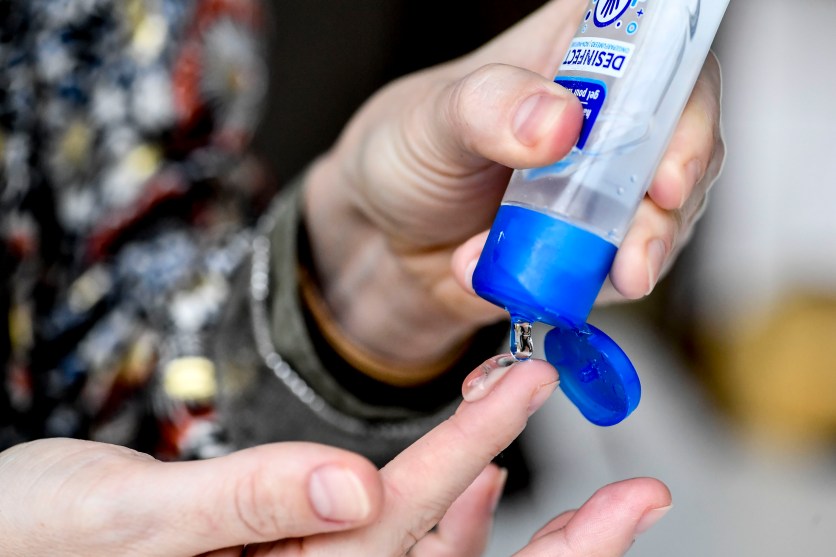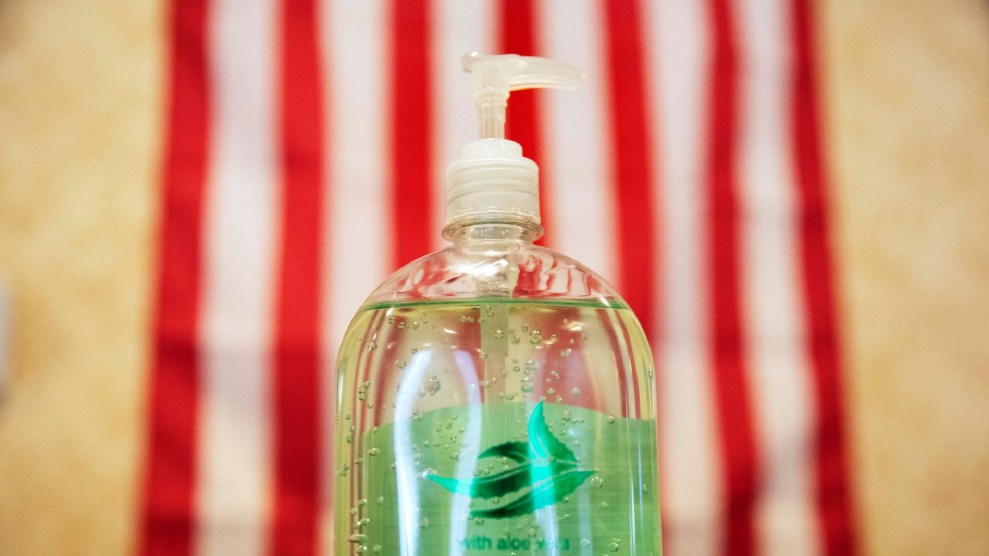
Dirk Waem/Belga/Auma
If you’ve opened Facebook or Twitter in the past few days, you might have come across a post with alarming information about the coronavirus attributed to Stanford University.
The post goes something like this: People with coronavirus may not show symptoms for several days, but if you can comfortably hold your breath for more than 10 seconds, you’re probably not infected. You should sip water every 15 minutes to wash the virus into your stomach, where stomach acid kills it, to prevent the virus from entering your windpipe and lungs. And if you have a runny nose, you have a cold, not the coronavirus.
Most of this is false.
I emailed Stanford’s office of communications to check the post’s authenticity. “The post is not from Stanford,” Lisa Kim at Stanford Health Care wrote back. She directed anyone who is confused to the university’s actual coronavirus information page.
Then I called Loren Rauch, a community ER doctor at Antelope Valley Hospital in Los Angeles with a master’s degree in epidemiology, to dispel some of the rumors circulating online. The statements in bold are quotes from the viral Facebook post, and Rauch’s responses—lightly edited for length and clarity—follow.
“The new coronavirus may not show signs of infection for many days. By the time you have fever and/or cough and go to the hospital, the lung is usually 50 percent fibrosis.”
That doesn’t mean anything. Fibrosis is a late scarring process. You may have 50 percent of your lung affected by the virus, causing pneumonia or fluid in your lungs. But fibrosis—that is not correct.
If you can breathe fine, do not go to the doctor. Only go if you cannot breathe or are very ill.
“Taiwan experts provide a simple self-check that we can do every morning: Take a deep breath and hold it for more than 10 seconds. If you do this successfully without coughing, without discomfort, stiffness or tightness, there is no fibrosis in the lungs; it basically indicates no infection. In critical times, please self-check every morning in an environment with clean air.”
That’s not true. That can check if you are anxious or have respiratory compromise.
“Everyone should ensure your mouth and throat are moist, never dry. Take a few sips of water every 15 minutes at least. Even if the virus gets into your mouth, drinking water or other liquids will wash them down through your throat and into the stomach. Once there, your stomach acid will kill all the virus. If you don’t drink enough water regularly, the virus can enter your windpipe and then the lungs. That’s very dangerous.”
Totally bogus. That’s not real.
“Drinking warm water is effective for all viruses. Try not to drink liquids with ice.”
No.
“If you have a runny nose and sputum, you have a common cold. Coronavirus pneumonia is a dry cough with no runny nose.”
Editor’s note: On this one, we thought new research might help: A pre-print study by a group of German researchers suggests that upper respiratory tract symptoms like runny nose may be more common than previously thought.
However, the CDC still emphasizes fever, cough, and shortness of breath as the main symptoms. And Whitney Adams, a former pandemic preparedness coordinator and programs manager for CARE, issued a word of caution when considering the deluge of non-peer-reviewed research information relating to the coronavirus. “While it’s really important for the research community, the medical community, public health community keep sharing these findings, we should take those with a grain of salt,” she said.
“It’s not necessarily helpful for people to try to self diagnose based on these things that are really hard for even clinicians to understand,” Adams said.
So the short answer is: It’s complicated.
“This new virus is not heat-resistant and will be killed by a temperature of just 26/27 degrees Celsius (about 77 degrees Fahrenheit). It hates the sun.”
If something’s in sunlight, it’s going to get disinfected pretty quickly, because that’s ultraviolet light, just the same type of sanitation we use in hospitals. The temperature in a dryer, for example, would kill everything. But just, like, “It’s gonna be a warm day today. We don’t have to worry about coronavirus,” I don’t think that’s gonna work.
“If someone with coronavirus sneezes, it goes about 10 feet before it drops to the ground and is no longer airborne.”
The general rule of thumb we’re using is about six feet.
—
The bottom line is that “there’s a lot of misinformation floating around,” said Adams, who noted she received an email containing the text of the false viral Facebook post last week. So to prevent the spread of rumors, do the information equivalent of social distancing: If someone posts something that sounds even the slightest bit fishy, don’t pass it on.








